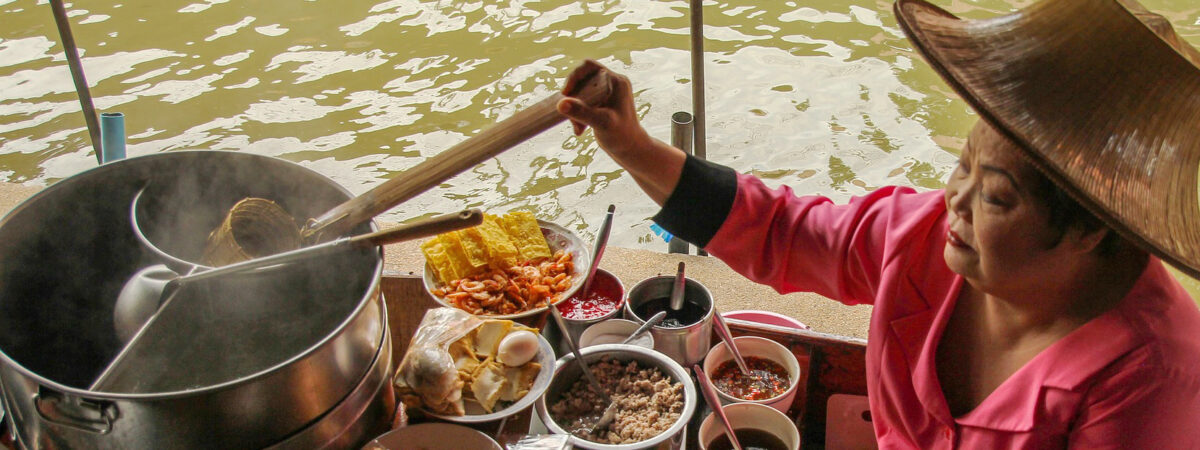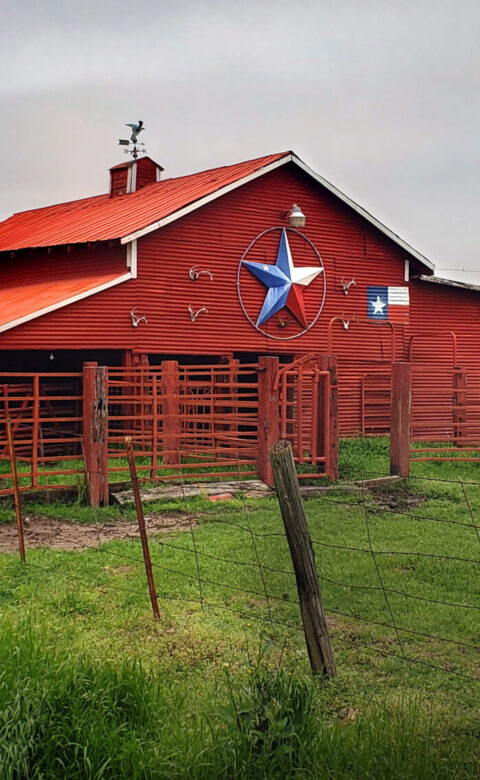At the foundation of Maslow’s hierarchy of needs, we find essential physical requirements such as shelter, food and water. So when we arrive somewhere, naturally we begin with the basics. We all understand the need for food; we need it to live. And when we travel, we need to eat! These days, for sustainable travel, the most common go-to advice is to “eat local”.
It sounds good when it’s written on a menu or appears on a restaurant sign. But if we dig a bit deeper, what does it all mean, and what kind of impact can food have in creating more sustainable destinations?
What is eating local?
You can read about eating local in any good “how to be a responsible tourist” guide. But it starts with going to restaurants that serve locally sourced, seasonal food with a menu based on local dishes; that use their decor to provide an ambience reflecting the culture and flavour of the destination; and that hire local staff and are locally owned.
By getting this far, you are already ahead of the game. Without a doubt, a restaurant hiring local people on a decent salary also gives back to society. The employees’ well-earned money will start circulating in the surrounding community when the staff buy their own food, go to the theatre, purchase their everyday necessities, and take the local bus.
A good employer is naturally synonymous with a good place to work; where salaries are fair, and holidays and benefits are available. As they’re most visible, too often we tend to focus only on the ‘front of house’ — those who greet us or serve our food — rather than considering all of a restaurant’s staff. But from the manager to the dishwasher, it is not difficult to spot an employee who feels like they’re being treated well and with respect, and happy staff will always give you the best service.
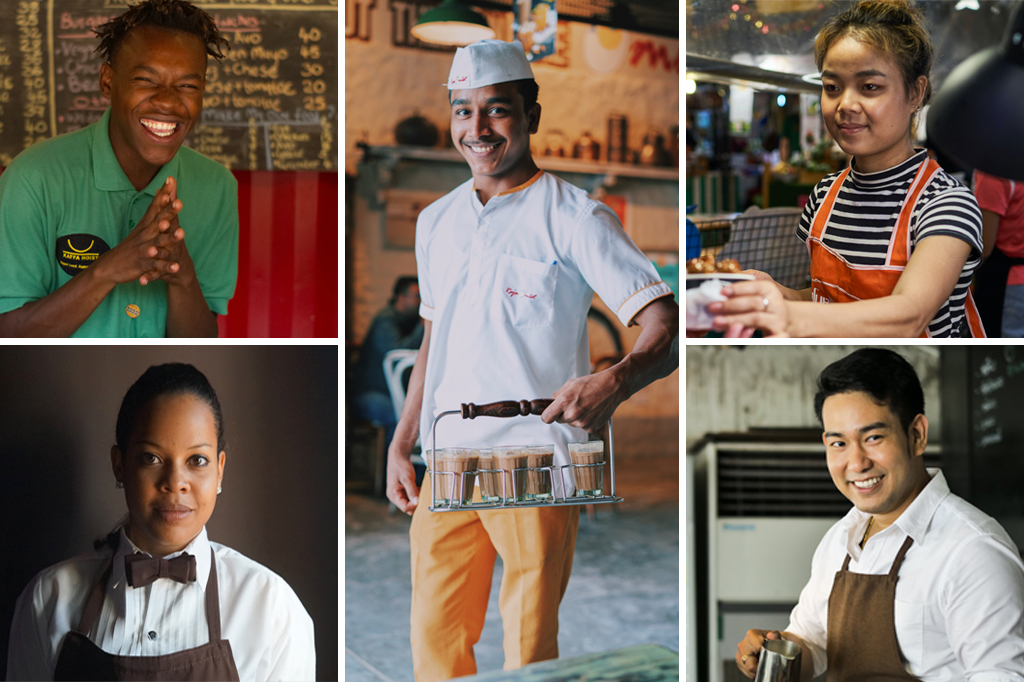
When the tomatoes served to you come from the farmer around the corner, that grower makes money which again will circulate into the local economy. The food is less travelled and does not come with a large carbon footprint; and hopefully, the farmer is being paid well for their crop.
Apart from enjoying what they produce when it’s served in a restaurant, a high-value experience can be had if you’re able to visit the farm that supplies those tomatoes. Just recently, I visited Kiritappu in Hokkaido, Japan, a town which has a lot of dairy farmers nearby. We were literally eating freshly made ice cream while looking at the factory that makes it, to the soundtrack of cows mooing.
Restaurants that serve food based on local specialities usually design their offering based on what the country produces and eats themselves. At least, this is what you would reasonably assume with most menus based on local dishes, right? But be aware of what is genuinely produced seasonally, do your homework and know what is actually in season when you plan to travel.
You might discover that the traditional ‘must try’ dish may be served at a tourist restaurant year-round, while in reality, it is only available to locals at a certain time of the year. Outside this period, the ingredients are imported. One way of learning about seasonal food and determining what is available in a destination is to visit a local market. Not only is it educational and a great way to get a sense of a place; you never know what taste sensations you’ll discover!
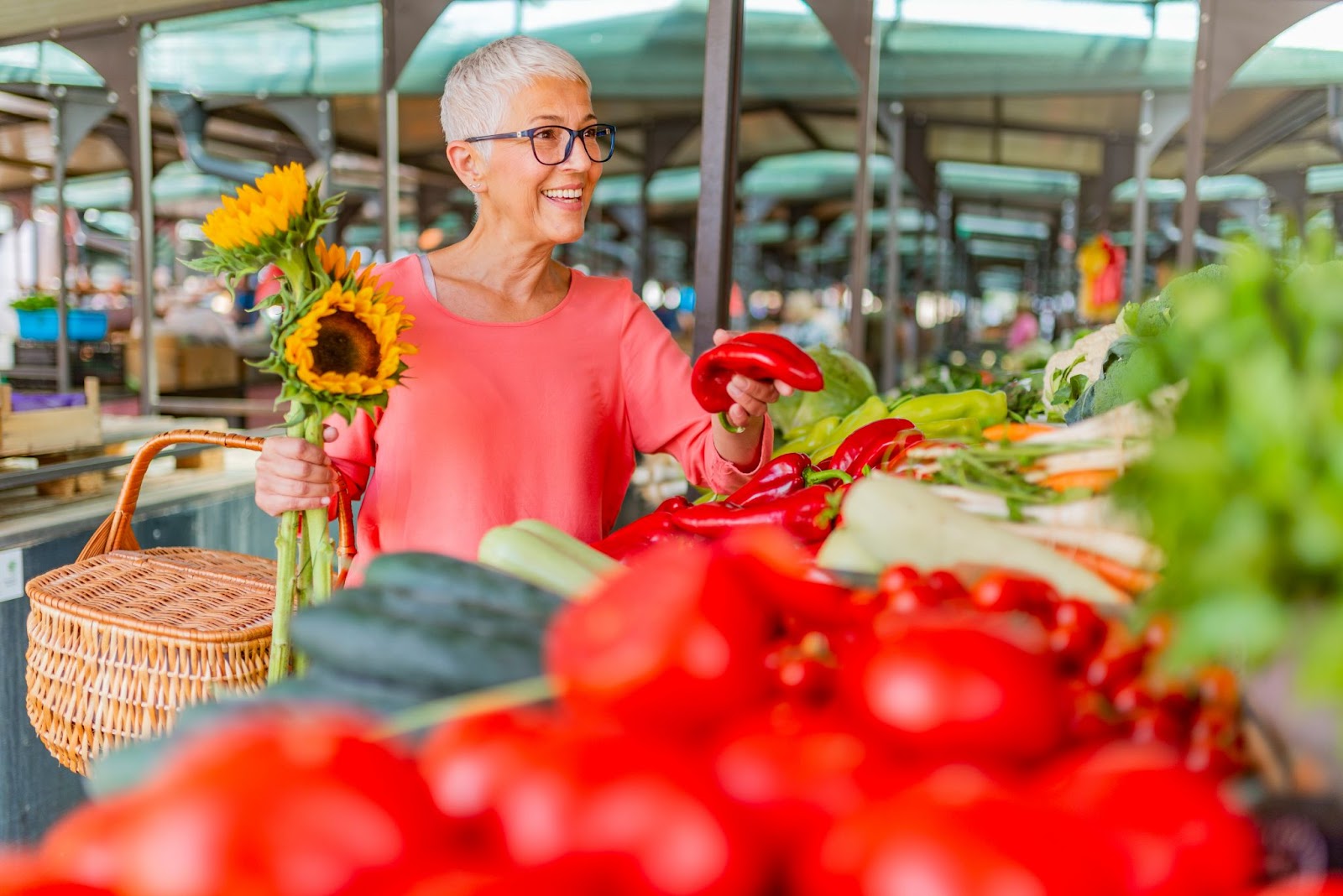
Next time you’re at a restaurant when travelling, look around you.
Notice the furniture; think about where the interior could have been sourced from. Does it reflect the local culture and traditions, and materials that are readily available in the region… or could you have stepped into a restaurant that could be anywhere, or is “just like what you have at home”? Locally furnished restaurants are not only more authentic-feeling but also more likely to have purchased their furniture in the area.
By observing your surroundings, you will also quickly notice if a restaurant cares about the environment. Avoid those that provide single-use and disposable items such as plastic bottles and straws. It is not easy on a one-time visit to a restaurant to research its waste management system. You may be able to check it online before visiting the restaurant, but if not, you can gain a quick understanding by looking at how they operate.
When browsing the menu, keeping an eye out for healthy organic produce and fairly traded ingredients is also part of eating locally and sustainably. An organic product should be kinder to the environment. However, have you ever thought about the knock-on effects of the clearing of land to make space for agricultural production? What is the balance sheet for destroying a natural habitat in order to produce organic food?
And though it is wise to leave (some of) your eating habits behind at home and go all in for the local style, be aware of places that practice controversial hunting methods and unsustainable mass production. Even if it’s the “done thing” you might not want to support that industry by buying their products.
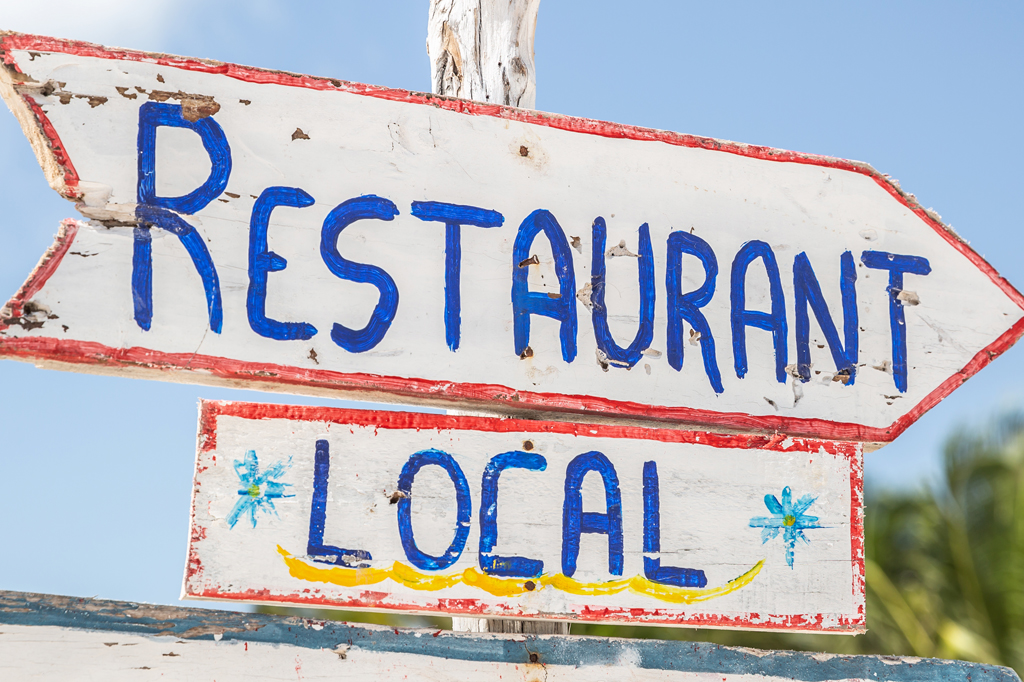
How can destinations create a sustainable food structure?
It is crucial, for a more sustainable world, to look at our eating habits and the food we produce and consume.
In many ways, food has been neglected as a sector that can have the power to make sustainability gains or reduce climate change. That’s why organisations like EAT are working to put food on the agenda and lobbying the world’s decision-makers. We need to acknowledge the impact that both the production of food and what we eat (and waste, uneaten!) have on the globe. The whole food system needs to change,
If all borders were closed for import and export today, what would you eat if the only thing you could have was what your country produces? Perhaps a restaurant should work according to that principle as far as it is possible… and they could still serve good quality, tasty food.
For starters, restaurants should be looking at their food waste management; what is being purchased, how it was produced and how it is served. A restaurant needs to look into its planning of menus, buying strategies, and organisation of meal delivery on a whole different level. In doing so, they will also discover there is money to be made — and saved. For restaurants, taking the PLEDGE on Food Waste is one way of tackling the challenge.
Planning and preparation are key. To avoid too many unnecessary trips, restaurants should look into the number of times they are shopping during a week. Can it be reduced to one main shop and a supplementary shop? For products coming from further away, restaurants in a given area should look into banding together to form an association; to cooperate on delivery and ordering, so the supply company makes limited trips to the area, with less driving and fewer carbon emissions.
Too often restaurants have a menu with too many options, which also means the restaurant has to stock everything. If dishes with certain ingredients are not ordered by customers often enough, the risk is that those ingredients will not be used and have to be discarded. Can the menu be reduced and made more flexible, with fewer ingredients that have greater versatility? Then the restaurant can better plan what ingredients to use based on availability, and also use up what needs to be used before it expires.
Too much good food is being thrown away. It is frustrating to see people ordering more than they’re able to eat, with it consequently going to waste. In fact, in many restaurants food is the largest contributor to financial losses. Yes, food is compostable, and these days we should be past the point of needing to discuss whether or not food waste goes to compost. Instead, before we throw food away, let’s think twice — can we give it a second life?
It is important to do an assessment, make a strategy for reducing overproduction, and consider what constitutes a reasonable serving size. Even in cultures known for their hospitality, there is such a thing as being over-generous; if plates are regularly coming back to the kitchen half full, portions may be too big.
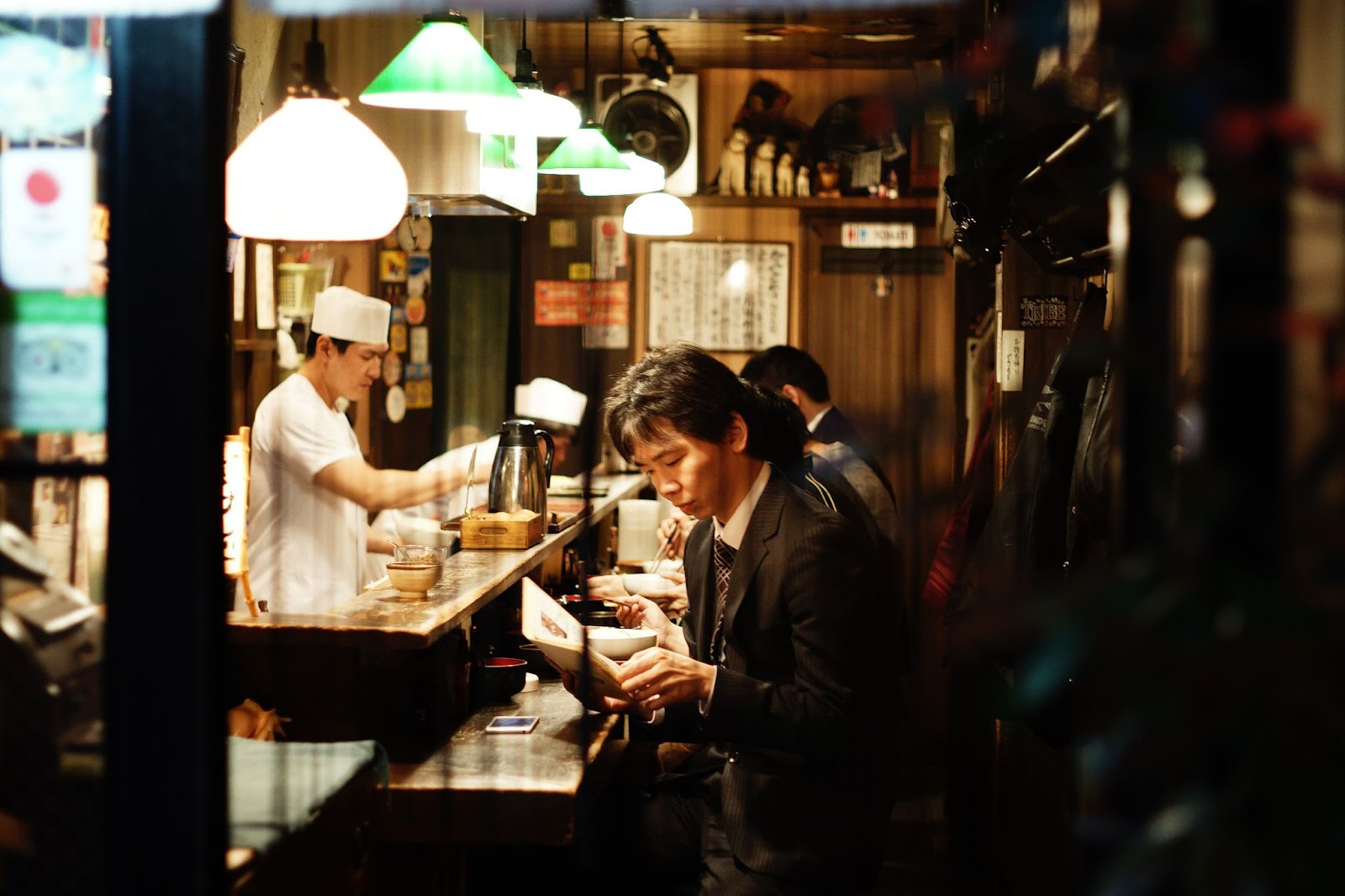
A local commitment beyond just “eating local”
As part of visitor management and destination planning that creates better places for people to live in — as well as to visit — food must be on the radar. It is an interlinked sector that overlaps many different tourism-related industries. From the sustainability point of view, if destinations get the food sector right, it will make a positive impact on the local community as well as improving the bigger picture. It is crucial that efforts are anchored cross-industry and supported by the local government to facilitate some of the action points.
At minimum, this should include:
- Using locally sourced food (with limited food miles) wherever possible;
- Association partnering on ordering and delivery, to reduce transport and carbon emissions;
- Proper menu planning, building in flexibility to use up produce with a limited remaining shelf-life;
- Working on creating seasonal, authentic menus and adding value for (and to) the region;
- Ensuring a food waste management system that works is in place and being used effectively;
- Focussing on ‘reduce, reuse, recycle’ — where the industry works with charitable organisations that give good quality leftover food a second useful life;
- And ultimately, making sure no edible food goes to landfill but is handled as it should be and distributed where it is needed.
PS… one last tip! To learn more about local eating on your sustainable food journey, join a “Cook Like a Local” experience. You will gain a deeper understating of local eating, how their food is produced and where it is sourced, and you might even make a few new friends.

